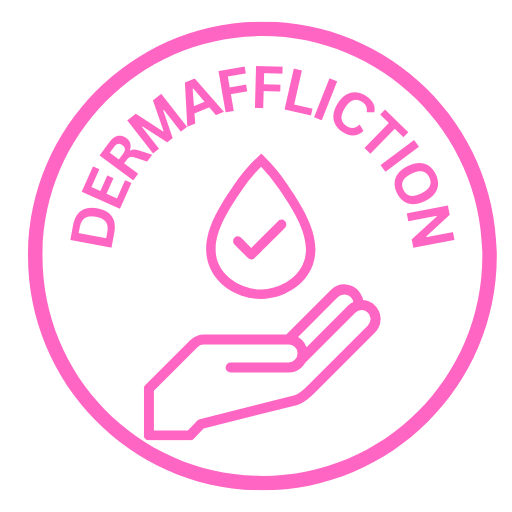Ichthyosis vs Eczema: Insights & Treatment Options
Lamellar Ichthyosis Vs Eczema
Lamellar Ichthyosis and eczema are two common skin conditions that can cause significant discomfort and affect a person’s quality of life. While they may share some similarities in terms of symptoms and treatment approaches, there are distinct differences that set them apart. It is important to understand these differences in order to receive an accurate diagnosis and appropriate treatment. In this comprehensive guide, we will explore the characteristics, causes, diagnosis, and treatment options for both lamellar ichthyosis and eczema.
Understanding Lamellar Ichthyosis
a. Definition and Overview
Lamellar Ichthyosis is a rare genetic disorder characterized by the accumulation of thick, scaly skin. It affects the skin’s ability to shed dead cells properly, leading to the formation of scales. This condition typically presents at birth or early infancy and can persist throughout a person’s lifetime. Lamellar Ichthyosis occurs in approximately 1 in 200,000 to 300,000 individuals worldwide and is caused by genetic mutations.
b. Symptoms and Characteristics
Individuals with lamellar ichthyosis often have thick, dry, and scaly skin that may cover the whole body or specific areas. The scales can have a characteristic tile-like appearance, hence the name “lamellar.” Itchiness, redness, and burning sensations are common associated symptoms.
c. Causes and Risk Factors
Lamellar ichthyosis is primarily caused by genetic mutations. It follows an autosomal recessive inheritance pattern, meaning that both parents must carry a copy of the mutated gene. Specific genes and proteins involved in maintaining the skin barrier function, such as transglutaminase-1 and loricrin, are often affected. Environmental factors, such as dry climates and certain chemicals, can exacerbate the condition.
d. Diagnosis
Diagnosing lamellar ichthyosis involves a combination of clinical examination, medical history evaluation, and laboratory analysis. A dermatologist will assess the appearance and distribution of scales, as well as ask about symptoms and family history. Genetic testing can confirm the diagnosis and identify the specific gene mutations involved. Differential diagnosis from other skin conditions, such as other forms of ichthyosis or psoriasis, is essential.
e. Treatment and Management
Treatment for lamellar ichthyosis focuses on managing and minimizing symptoms, as there is no cure. Regular and thorough moisturization with emollients, creams, and oils is crucial to prevent dryness and cracking of the skin. Topical medications, including corticosteroids and keratolytics, may be prescribed to reduce inflammation and promote shedding of dead skin cells. Physical therapy and rehabilitation can help improve joint mobility and function. Support and coping strategies, such as connecting with support groups, can also be beneficial for individuals with lamellar ichthyosis.
Understanding Eczema
a. Definition and Overview
Eczema, also known as atopic dermatitis, is a common chronic skin condition characterized by inflamed, itchy, and irritated skin. It is a type of allergic reaction where the skin’s natural barrier function is compromised. Eczema often appears in early childhood but can persist into adulthood. There are different types of eczema, including atopic eczema, contact dermatitis, and dyshidrotic eczema.
b. Symptoms and Characteristics
Eczema manifests as itchy patches of red, inflamed skin that can be rough, dry, and scaly. The appearance and distribution of the rash may vary depending on the type of eczema. It is common for eczema to flare up in response to certain triggers, such as allergens, irritants, stress, and temperature changes.
c. Causes and Risk Factors
Genetic factors play a significant role in the development of eczema. Individuals with a family history of allergies, asthma, or eczema are more predisposed to the condition. Eczema is often associated with an overactive immune response and an impaired skin barrier. Allergens, such as pollen, dust mites, and pet dander, as well as irritants like soaps and fragrances, can trigger or aggravate eczema symptoms.
d. Diagnosis
Diagnosing eczema typically involves a thorough physical examination and evaluation of the skin’s appearance and symptoms. Occasionally, allergy testing or patch testing may be done to identify specific triggers or allergens that may be contributing to the condition. Proper diagnosis is essential to differentiate eczema from other skin conditions, such as psoriasis or fungal infections.
e. Treatment and Management
The primary goal in managing eczema is to control inflammation, relieve itching, and prevent flare-ups. Keeping the skin well-moisturized with emollients and applying topical corticosteroids or immunomodulators can help reduce inflammation. Identifying and avoiding triggers, such as certain foods or environmental factors, is essential in preventing flare-ups. Lifestyle modifications, including gentle skincare practices, avoiding harsh chemicals or irritants, and managing stress, can also help manage eczema symptoms.
Differences between Lamellar Ichthyosis and Eczema
a. Skin Appearance and Texture: Lamellar ichthyosis causes thick, scaly skin with a tile-like appearance, while eczema results in inflamed, red, and itchy patches of rough, dry skin.
b. Scaliness and Severity: Scale accumulation is more pronounced and extensive in lamellar ichthyosis compared to the scales typically seen in eczema. The severity of symptoms can vary in eczema, with some individuals experiencing mild, occasional flare-ups and others having more persistent and severe symptoms.
c. Age of Onset: Lamellar ichthyosis is usually present at birth or infancy, whereas eczema often first appears in childhood but can develop at any age.
d. Genetic Factors: Lamellar ichthyosis is primarily caused by specific gene mutations, while eczema is influenced by a combination of genetic factors and environmental triggers.
e. Treatment Approaches: The treatment of lamellar ichthyosis focuses on managing symptoms and promoting skin shedding, while eczema treatment aims to reduce inflammation, relieve itching, and prevent flare-ups through the use of moisturizers, topical medications, and trigger avoidance strategies.
Similarities between Lamellar Ichthyosis and Eczema
a. Skin Dryness: Both conditions are associated with dry skin and may require regular moisturization.
b. Itchiness and Discomfort: Itching is a common symptom in both lamellar ichthyosis and eczema, leading to discomfort and potential disruption of daily activities.
c. Impact on Daily Life: Both conditions can affect a person’s daily life, including their physical, social, and emotional well-being.
d. Potential Psychological Effects: Coping with the physical appearance and chronic symptoms of lamellar ichthyosis or eczema can have an impact on an individual’s self-esteem and overall mental health.
Conclusion
Lamellar ichthyosis and eczema are distinct skin conditions that require a thorough understanding for accurate diagnosis and effective management. While they have similarities in terms of dryness, itching, and impact on daily life, their causes, characteristics, and treatment approaches differ. If you suspect that you or your child may have either condition, it is essential to seek professional diagnosis and guidance. With the appropriate management techniques and support, individuals can minimize the impact of these conditions and lead a fulfilling life.
"Have You Seen Mike Walden's new holistic acne System yet? It's called "Acne No More" I've read the whole thing (all 223 pages) and there's some great information in there about how to naturally and permanently eliminate your acne without drugs, creams or any kind of gimmicks. I highly recommend it - it's very honest and straightforward without all the hype and b.s. you see all over the net these days. Here's the website where you can get more information:
Click Here -->AcneNoMore









